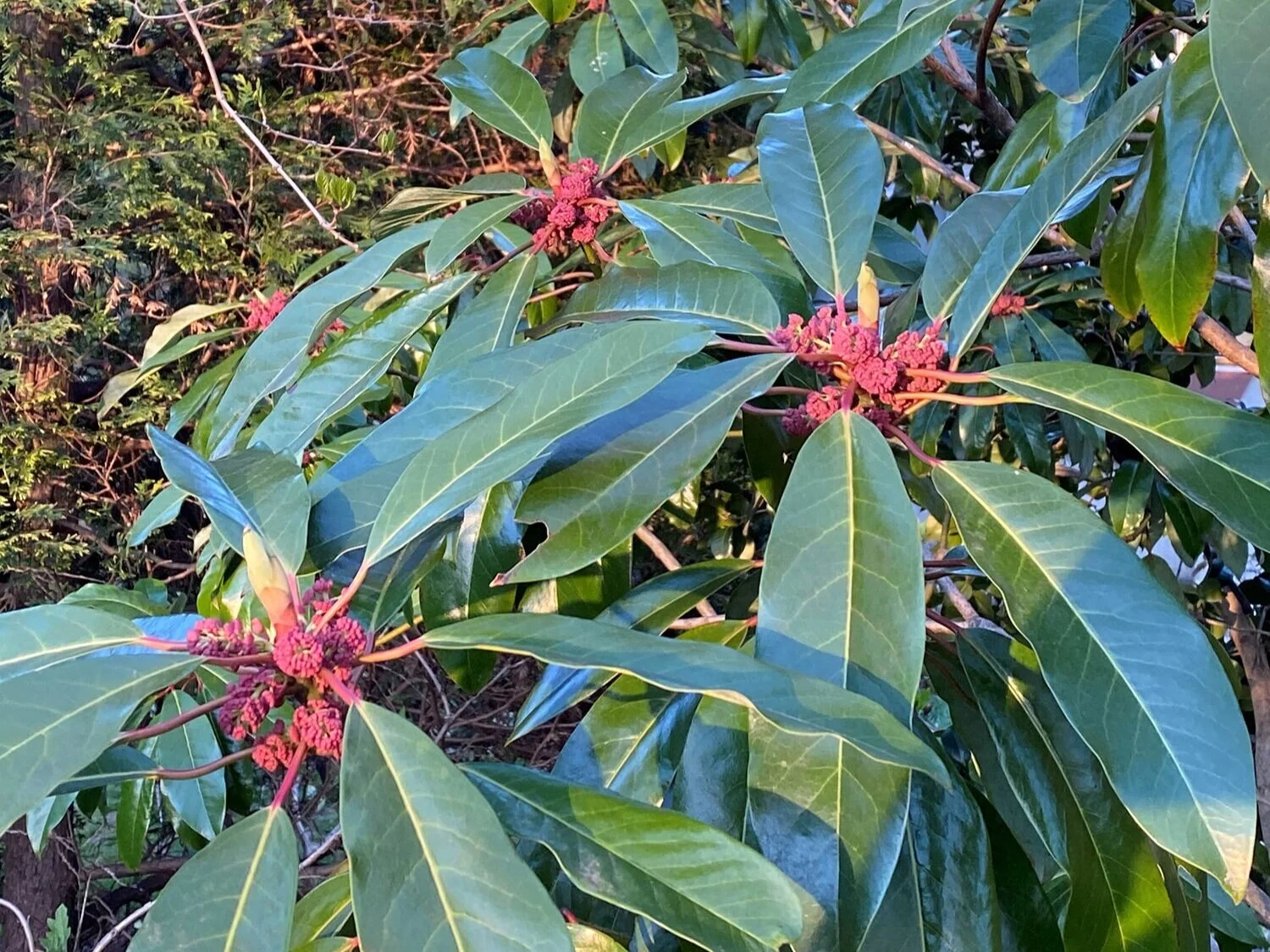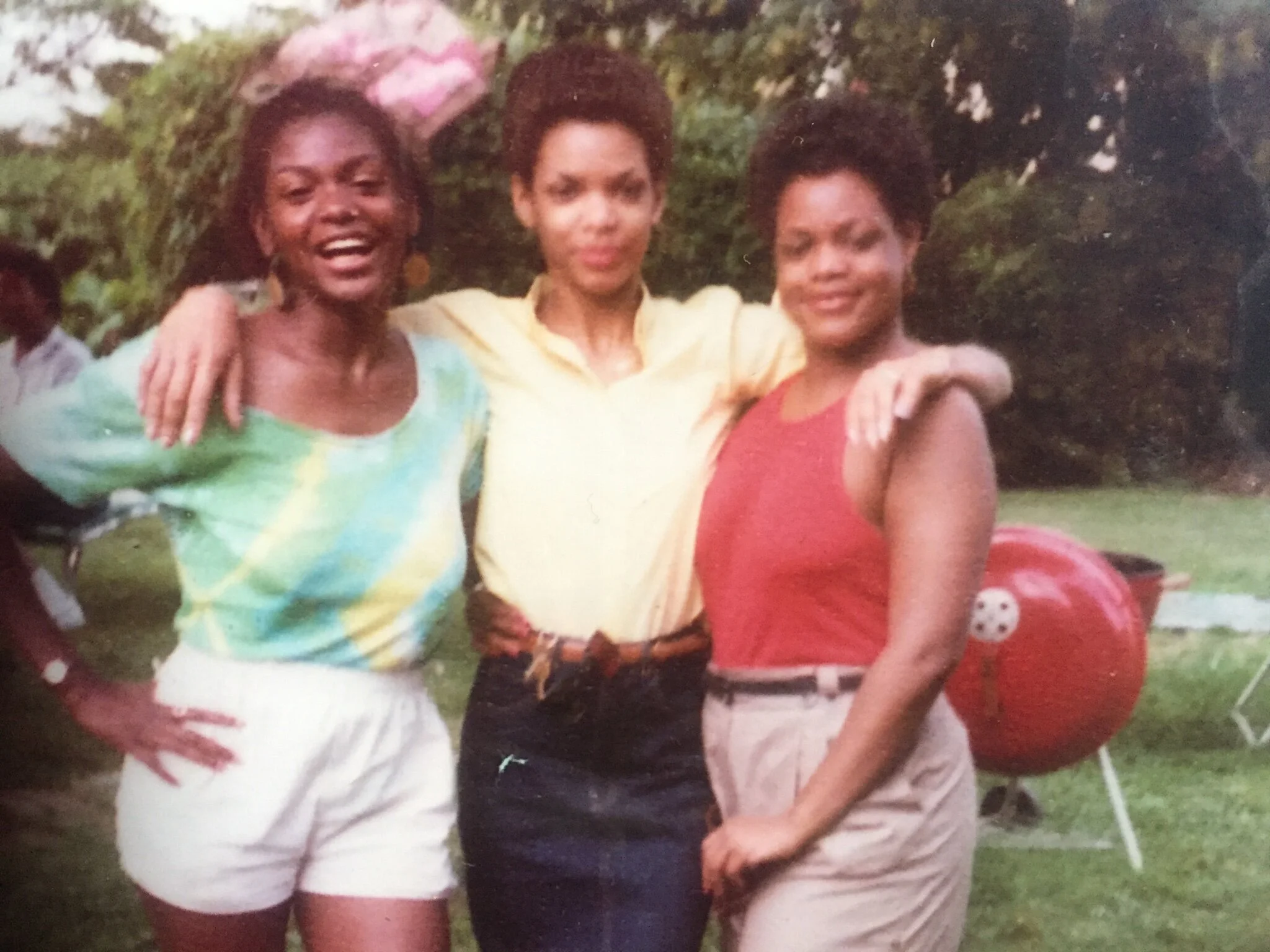Beyond Rhododendrons: Great Broadleaved Evergreens for the Garden
In the Garden with Andrew
Andrew Bunting. Photo courtesy of the Pennsylvania Horticultural Society.
As we leave winter behind, I am reminded how important evergreen trees and shrubs are to the garden. On the East Coast, we enjoy an amazing diversity of evergreen rhododendrons and azaleas, which are staples in many of our gardens. However, there are many other fantastic broadleaved evergreen shrubs to consider using too.
Over the last 15 years or so, one of my favorite evergreen shrubs has been Daphniphyllum macropodum. Unfortunately, these shrubs are still relatively rare in the garden centers, but on occasion I see them for sale. While the flowers are somewhat inconspicuous, the foliage resembles rhododendrons in many respects. Daphniphyllum is distinctively glossy, however, and its petiole (the small stem that attaches the leaf to the branch) can be a very attractive pinkish red. Its alkaloids make Daphniphyllum nearly 100% deer resistant. Only once in the last 20 years have I seen this plant browsed, and that was in a garden near the Tyler Arboretum where there is considerable deer pressure.
I have a few Daphniphyllum specimens in my home garden. One is a multi-stemmed shrub, while the other, with a single trunk, looks almost like a small tree. This plant can withstand very dry shade. At the back of my property, I have a row of large, mature Norway spruces, Picea abies. The canopy from these trees is so dense that the ground under them can be very dry even after a heavy rain. In spite of these hostile growing conditions, Daphniphyllum thrives.
Over the years, I have become enamored of the many cultivars of Osmanthus heterophyllus, holly olive or false holly. This member of the olive family has spiny leaves, like many hollies. They are evergreen, multi-stemmed shrubs that can be grown in full sun to full shade. In the fall, their profuse, tiny white flowers are intensely fragrant. Of the many cultivars, ‘Gulftide’ — a Pennsylvania Horticultural Society Gold Medal recipient — is the most popular, and its foliage is the most holly-like. It is a great selection for creating formal or informal hedging.
Daphniphyllum macropodum is becoming increasingly available at garden centers. Photo: Andrew Bunting
The leaves of Trochodendron aralioides, or wheel tree, radiate out from a central stem like the spokes on a wheel. Photo: Andrew Bunting
‘Goshiki’ also received a Gold Medal designation. I have a specimen in my front yard that is about 10 feet tall with a 6-foot spread. Its characteristic holly-like leaves have a beautiful variegation of dark green and sulfur yellow. ‘Sasaba’ has wickedly spiny leaves that make it perfect for creating an impenetrable barrier. At maturity, it reaches a manageable 5 feet tall with an equal spread. The diminutive ‘Kaori Hime’ makes an excellent addition to the small courtyard garden or rock garden.
On a recent visit to Longwood Gardens, I spent quite a bit of time in its Hillside Garden, in and around the Chimes Tower, among some wonderful specimens of the wheel tree, Trochodendron aralioides. This multi-stemmed rounded shrub can become somewhat tree-like over decades. Its leaves radiate out from a central stem like the spokes on a wheel — hence the common name. Each leaf is glossy and elliptical. The branching develops in a somewhat layered pattern, adding a structural component to the garden.
Finally, I love the genus Sarcococca. Like its relative, the boxwood, Buxus, it is truly deer resistant. Sarcococca hookeriana var. humilis Fragrant Valley has beautiful, shiny, narrow leaves. Its late-winter to early-spring white flowers are amazingly fragrant. Commonly referred to as the sweet box, Sarcococca is perfect to plant as a small massing shrub or a groundcover. It thrives well in very shady conditions, including in dry shade. Because it is deer resistant, it always looks great. In a garden with limited space, it can be used as a small accent at the entrance to the house or near gates where its fragrance can be enjoyed.
Reader Questions
Container Gardening
Q: What should container gardeners do before replanting their containers with new plants for the season? I have read advice to wash — even disinfect — the containers, and to replace the potting soil each year. Is this really necessary? If it’s ok to use potting soil from prior years, should that old soil be amended with fertilizer, compost, or other nutrients?
A: It is not necessary to clean the pot. If you can reuse the soil, go ahead and do that. But often, a tracery of roots from the year before makes it difficult to dig. I often just replace with fresh potting soil. Regardless, you should have a fertilizing regimen each year. I would suggest digging in a slow-release fertilizer like Osmocote before planting, then using a soluble fertilizer such as 15-15-15 every two weeks.
Q: Do you have favorite plants that you recommend for containers?
A: I love to plant a “thriller” as a central plant — a stunning plant like a canna, banana, elephant ear, or angel’s trumpet. Then I add the “filler” around it: bushy side plants like coleus, Cuphea, or salvia. And finally, the “spiller”: dangling plants like sweet potato vine, verbena, or Dichondra. The keys to container success, then, are “thriller,” “filler,” and “spiller.”
Q: What common mistakes do you see with container gardening?
A: The most common mistakes I see are:
Not having a good balance of plants. (Avoid with the thriller, filler, spiller rule.)
Not fertilizing.
Also, don’t forget to occasionally pinch back the growth of many plants to make them bushier, and also to remove old leaves and flowerheads.
Send your gardening questions to editor@swarthmorean.com. Put “Garden” in the subject line.
Andrew Bunting is vice president of public horticulture at the Pennsylvania Horticultural Society and vice president of the Swarthmore Horticultural Society.






